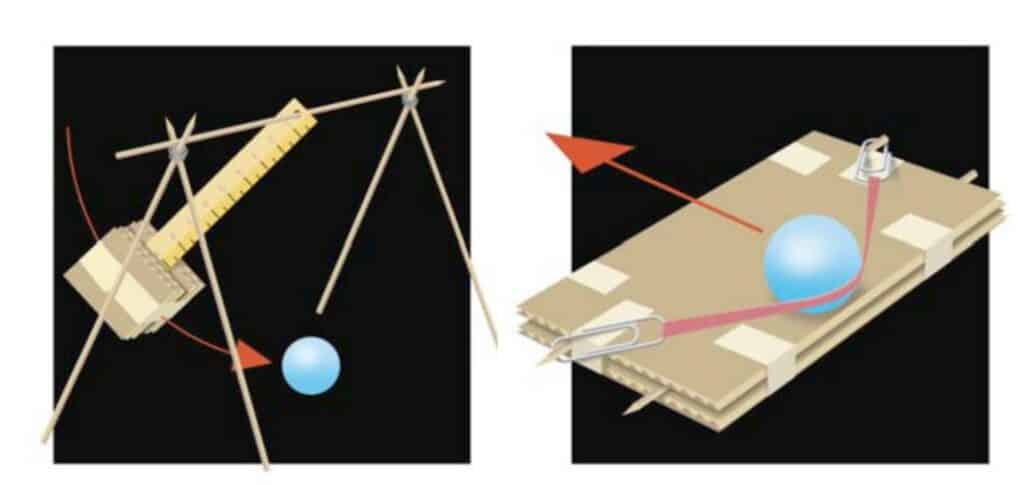Overview
Materials
Per Group of 3-4 Students:
- Balls (ping-pong or golf)
- Corrugated cardboard
- Paper clips
- Paper cups
- Popsicle sticks
- Rubber bands
- Ruler
- Scissors
- String
- Tape (masking or duct)
- Wooden skewers
- Optional: Thin metal wire
Instructions
Challenge students to design a machine that kicks a ping- pong ball into a cup lying on its side 12 inches away, using a pendulum, rubber band, or combination of the two.
- Place students in groups. After describing the challenge, tell them to design their machine, which will involve answering these questions:
- How will the machine be prevented from kicking the ball before they want it to?
- How will the machine be triggered to launch at the right time?
- How will they ensure that the pendulum or rubber band launches the ball straight and with enough force to land in the cup?
- As students work, have them consider how to create different release points for the pendulum or rubber band in order to have control over the launched ball. They also have to think about the right amount of energy to store (potential) before making the launch (kinetic).
- To test their machines, groups lay a cup on its side 12 inches away and see if the ball will kick in. They may need to deal with the stretched rubber band bending their frame. The pendulum and rubber band might slip and not stay pulled back.
- If students encounter glitches, tell them to redesign and retest until their kicking machine is a success.

Guiding questions
-
How would your machine have to be modified if the cup is 24 inches away instead of 12?
-
How do you think you’d build a machine if the ball had to shoot up and over a ramp?
-
How might you build a machine that can launch balls at different speeds, or launch more than one at a time?
Engineering & science connections
- Potential energy is “stored” energy just waiting to be released, as in a lifted pendulum or stretched rubber band. Kinetic energy is the energy of motion, which happens when the potential energy in the pendulum or rubber band is released.
- Have you ever wondered why roller coaster rides don’t need engines? When a roller coaster starts off, a winch brings the cars to the top of the first hill. As soon as you start to go down, the potential energy that is built up is released as kinetic energy, and that carries you the whole way to the end of the ride.
- There are pendulums all around us that convert potential energy to kinetic energy. Large clocks, such as Big Ben and those in town squares all around the US, use a pendulum to operate the clock. The skyscraper known as Taipei 101 uses a huge pendulum inside the top of the tower to counteract earthquake forces on the building!
This activity was provided by Design Squad Global. TM/© 2006 WGBH Educational Foundation. All rights reserved. Design Squad is produced by WGBH Boston.


0 Comments